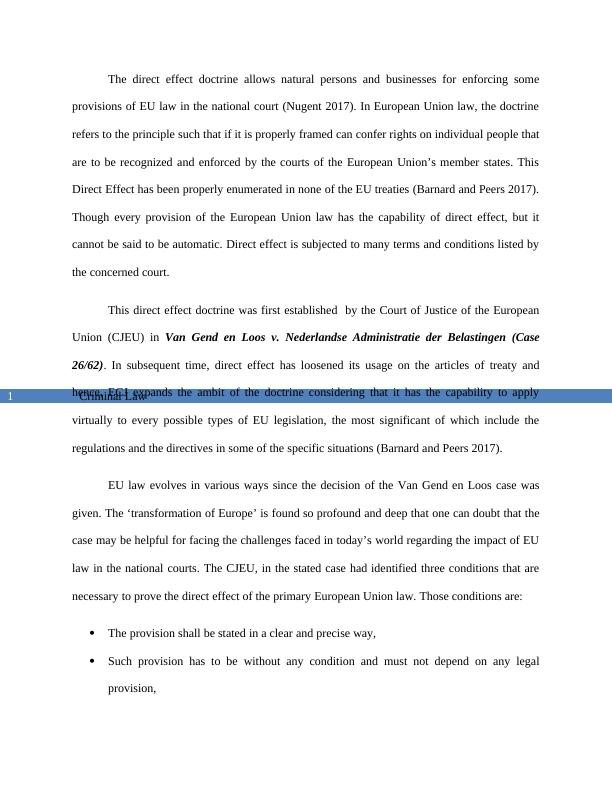Direct Effect Doctrine in EU Law
5 Pages828 Words62 Views
Added on 2022-11-14
About This Document
This document explains the Direct Effect Doctrine in EU Law and its application in national courts. It discusses the conditions necessary to prove the direct effect of the primary European Union law and the types of EU legislation that can be affected by the doctrine. The document also highlights landmark case laws related to the Direct Effect Doctrine.
Direct Effect Doctrine in EU Law
Added on 2022-11-14
ShareRelated Documents
End of preview
Want to access all the pages? Upload your documents or become a member.
European Union Law: Direct and Indirect Effect, Liability of State
|8
|2522
|51
European Union Law : Assignment
|11
|2565
|112
The Direct effect is not considered
|11
|2963
|18
The English Law Assignment
|5
|1950
|84
The Concept of Supremacy and Direct Effect in European Law
|6
|1705
|320
Development of Doctrine of Supremacy of EU Law by ECJ
|11
|3772
|287


